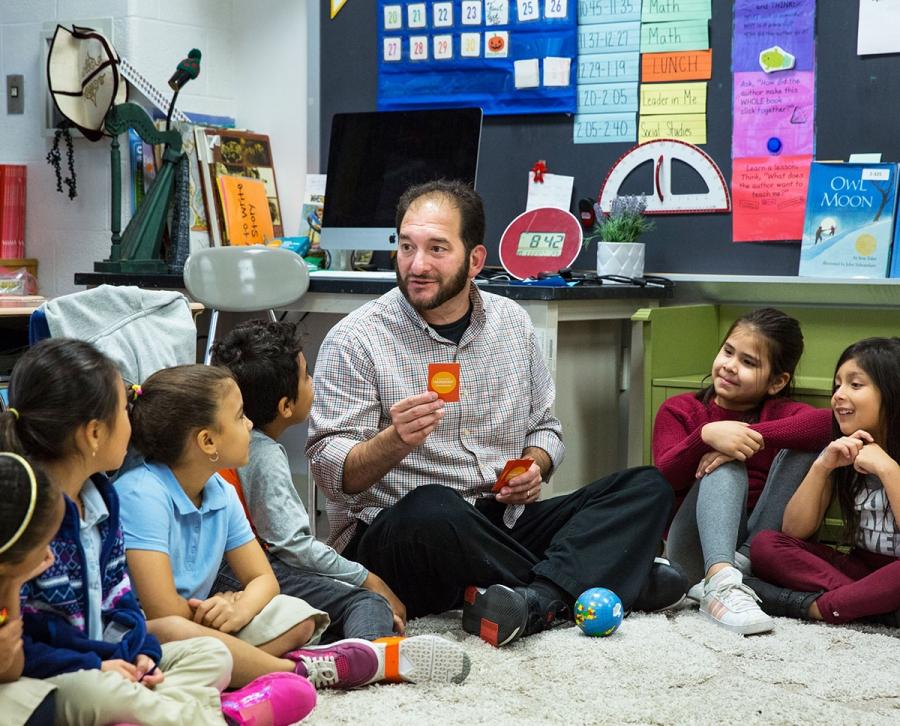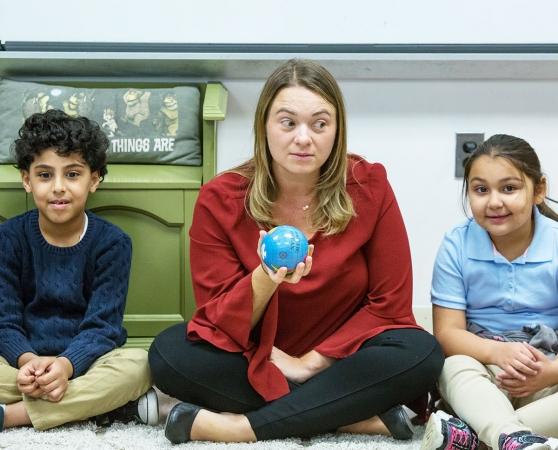Ten years ago, when I was a 2nd-grade teacher in Ridgewood, Queens, the tenor of my classroom largely depended on the mood of one particular student.
If Alejandro was having a good day, we were all having a good day. If Alejandro arrived at school scowling instead of smiling, we were all doomed.
Alejandro was performing academically on grade level. The work that he most needed to do in school that year wasn’t in reading or math; it was the work of self-regulation, socialization and communication. But I had no tools in my curriculum to address the social-emotional needs of students like Alejandro.
In June 2019, Mayor Bill de Blasio and Schools Chancellor Richard Carranza announced a major expansion of programs to address social-emotional learning across New York City public schools, which will provide every school with access to a social-emotional curriculum. In many elementary schools, the curriculum is Sanford Harmony, which was developed in 2008 by researchers at Arizona State University.
A 2017 study by those researchers found that 5th-grade students who participated in Sanford Harmony “liked school more, felt a greater sense of classroom identification and inclusion, were perceived by teachers to be less aggressive and performed better academically than students who were in control classrooms.”
Sanford Harmony lessons center around “meetups” — in which the whole class gathers in a circle to discuss community goals — and “buddy-ups,” where students meet in pairs for activities. The curriculum focuses on five themes: diversity and inclusion, empathy and critical thinking, communication, problem solving and peer relationships.
In lessons for the youngest grades, teachers introduce these ideas to students by reading stories about an alien named Z who has crash-landed on Earth and needs students’ help to learn how to behave.
“In kindergarten, what’s most important is for children to learn about themselves and how to appropriately engage with other children — how to problem-solve, what it means to have empathy,” says Zenzile DaBreo, a kindergarten teacher at PS/IS 109 in Brooklyn. “This program really teaches children how to deal with those issues.”
In DaBreo’s classroom, each Sanford Harmony lesson begins with a connection; for example, “Think about a time you were playing with a friend and your friend wanted to do something different than you.” Then she asks students to listen for that same idea in the day’s story about Z.
After they read together, students pair up to work on a related activity together. They might create a diagram about how they and their friend are alike and different, for instance, or draw a series of pictures depicting two hypothetical friends solving a problem.
A complete Sanford Harmony lesson can last a full class period — leading some teachers to wonder whether they are giving up instructional time to accommodate it.
“This can feel like one more thing to fit in. But once we get comfortable with it, it will pay off in other areas,” says 3rd-grade teacher Dina Galanti, the chapter leader at PS 58 on Staten Island, which adopted Sanford Harmony in September. “In other subjects, when we practice accountable talk, they know what their teacher expects to hear. But with these lessons, it’s open-ended. They’re learning how to communicate their own feelings and thoughts in an appropriate way.”
Teachers who are pressed for time can use “Quick Connection” cards to squeeze in short activities. At PS 254 in Richmond Hill, Queens, 2nd-grade teacher and chapter leader Gary Fox likes to start the day with a class meeting using a Sanford Harmony prompt. On a recent Friday morning, students gathered in a circle to answer the question, “Which do you think is harder — being a kid or being a grown-up?”
When one student shared that being a kid is hard because “bullying hurts my feelings,” Fox seized the opportunity to have an impromptu class discussion about bullying.
“Even with a question like, ‘What’s your favorite fruit?’ all of a sudden kids are looking at other kids who picked the same fruit and making a connection with someone they probably wouldn’t have,” says Fox.
Over time, says Fox, the connections students form in their brief daily circles help them support each other in more difficult situations.
“Because it’s built into our day, it’s becoming part of the culture of our school that kids are figuring out how to talk to each other to solve problems,” he says. “When you have a connection with someone, you treat them better.”

